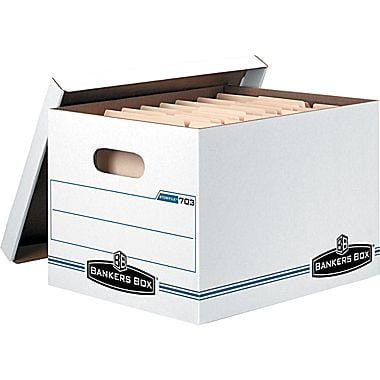Every day is Earth Day at Shred Bull Shredding.
Shred Bull collects, shreds and recycles 10 tons of paper every week!
By recycling ten tons of paper every week Shred Bull and our customers:
- Save enough energy each week to power the average American home for sixty months.
- Save 70,000 gallons of water each week!
- Save 33 cubic yards of landfill space.
- Reduce greenhouse gas emissions by ten metric tons of carbon equivalent (MTCE).
At Shred Bull Shredding, every day feels like Earth Day as we diligently collect, shred, and recycle a whopping 10 tons of paper each week! This isn't just about shredding; it's about making a real impact on our environment. Let's break down the numbers:
- Energy Savings: By recycling this hefty amount of paper weekly, we're saving enough energy to power the average American home for a staggering sixty months. That's no small feat!
- Water Conservation: Our efforts also lead to the preservation of 70,000 gallons of water every week. Water is a precious resource, and every drop counts.
- Landfill Space: We're not just stopping at energy and water savings; we're also reducing landfill congestion by 33 cubic yards per week. It's about making space for a cleaner, greener future.
- Greenhouse Gas Reduction: Perhaps most importantly, our recycling initiatives contribute to a reduction of ten metric tons of carbon equivalent (MTCE) in greenhouse gas emissions. That's a significant step towards combating climate change.
But our commitment to the environment doesn't stop there. We're also passionate about source reduction and lightweighting. By minimizing the weight and volume of packages and containers, we're saving energy and raw materials. Our partnerships with product manufacturers ensure that we find the perfect balance between product protection and environmental responsibility.
Moreover, we're advocates for forest certification programs like the Sustainable Forestry Initiative (SFI), which ensures the sustainable management of forests for future generations.
The impact of our recycling efforts extends far beyond our facilities. According to the American Forest & Paper Association (AF&PA), recovered paper accounts for a substantial portion of the raw materials used in US paper mills. This demonstrates the growing demand for recycled paper and the importance of our collective recycling endeavors.
At Shred Bull Shredding, we're not just a shredding company; we're stewards of the environment, dedicated to making a difference one shredded paper at a time. Join us in our mission to create a cleaner, greener planet for generations to come.
Sources:
- Municipal Solid Waste in the United States: Facts and Figures
- Energy Information Administration Kid’s Page
- US EPA Waste Reduction Model (WARM)
- Reduces greenhouse gas emissions that can contribute to climate change by avoiding methane emissions and reducing energy required for a number of paper
 products.
products. - Extends the fiber supply and contributes to carbon sequestration.
- Saves considerable landfill space.
- Reduces energy and water consumption.
- Decreases the need for disposal (i.e., landfill or incineration which decreases the amount of CO2 produced).
- The average American uses around 82 gallons per day per person in the household. That means a family of four would use around 10,000 gallons in a 30-day period.
On the other hand, when trees are harvested for papermaking, carbon is released, generally in the form of carbon dioxide. When the rate of carbon absorption exceeds the rate of release, carbon is said to be “sequestered.” This carbon sequestration reduces greenhouse gas concentrations by removing carbon dioxide from the atmosphere.
generally in the form of carbon dioxide. When the rate of carbon absorption exceeds the rate of release, carbon is said to be “sequestered.” This carbon sequestration reduces greenhouse gas concentrations by removing carbon dioxide from the atmosphere.
Source Reduction/Lightweighting
Source reduction is the process of reducing the volume or toxicity of waste generated.
One form of source reduction is “lightweighting.” Lightweighting means reducing the weight and/or volume of a package or container, which saves energy and raw materials. As early as 1983, companies manufacturing food service disposables began reducing the weight of plates, bowls, containers, trays and other tableware. Manufacturers of paper food service disposables have been able to source reduce by decreasing the paper stock required to manufacture food service containers and coating the containers with a very thin layer of polyethylene or wax. The coating enables the container to maintain its strength and food-protection functions.
Paper packaging is also a good example of where lightweighting has been achieved. Product manufacturers work with their packaging suppliers to identify the best combination of effective protection for the product using the lightest weight package.
Another way to reduce the amount of paper used is to reduce the margins, whether it is in newspapers, books, or everyday printing. For example, reducing the margins in Microsoft Word from 1.25 inches to 0.75 inch could result in average paper savings of approximately 4.75 percent (1).
Also related to source reduction are forest certification programs such as the Sustainable Forestry Initiative (SFI), a comprehensive system of principles, objectives and performance measures developed by professional foresters, conservationists and scientists that combines the perpetual growing and harvesting of trees with the long-term protection of wildlife, plants, soil, and water quality. Learn more about the .
(1) Source: “Mueller Policy Paper #1: Reduce Standard Margin Settings”, 2001 (PDF). (1 pg, 108K, about PDF)
For more paper recycling statistics, please visit:
- Frequent questions, which has paper recycling facts and figures
- Municipal Solid Waste Characterization Report
- Paper Industry Association Council PIAC)
- American Forest & Paper Association (AF&PA)
Use of Recovered Paper
AF&PA reported that in 1988, about 25 percent of the raw materials used at US paper mills was recovered paper. In 1999, according to AF&PA, that figure rose to 36.3 percent and has remained around 36-37 percent through 2007. More than three quarters of America’s paper mills use recovered fiber to make some or all of their products. Approximately 140 mills use recovered paper exclusively. As a result, virtually all types of paper products contain some recycled fiber. According to AF&PA, the brisk rise in paper recovery is attributable to strong demand overseas for US recovered paper and solid gains in domestic consumption.
Sources:
- Municipal Solid Waste in the United States: Facts and Figures
- Energy Information Administration Kid’s Page
- US EPA Waste Reduction Model (WARM)


